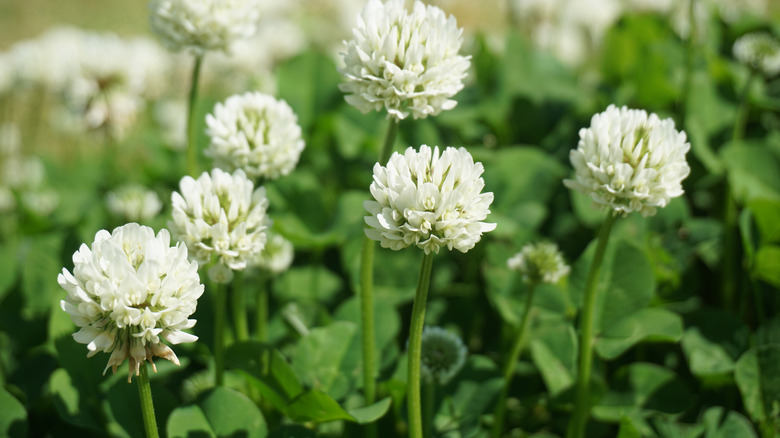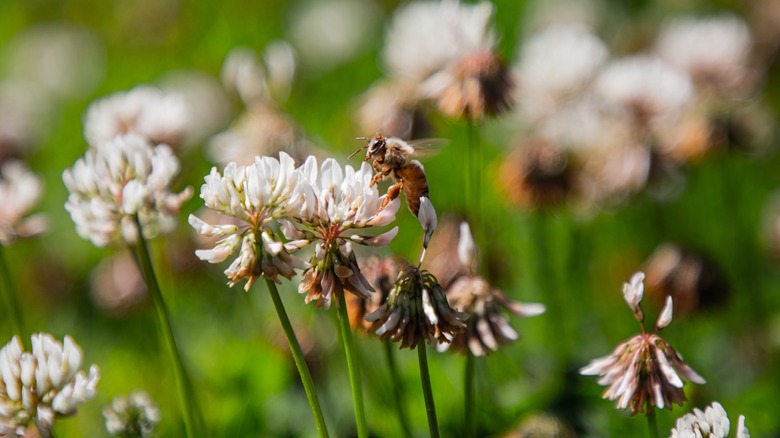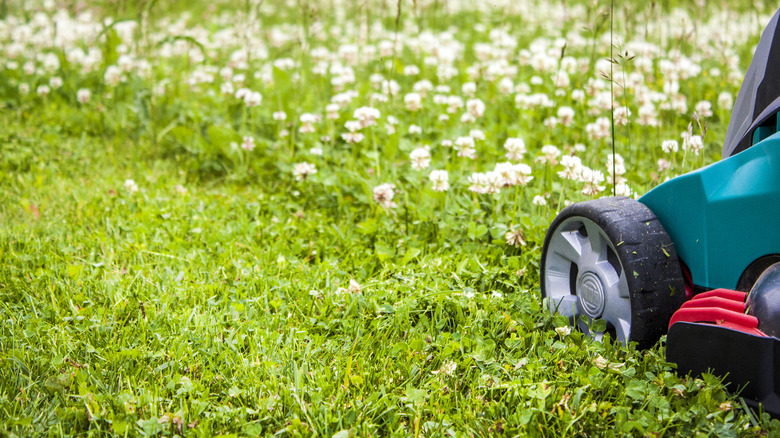White Clover In Your Lawn? What To Consider Before Getting Rid Of It
Maintaining a green, lush lawn can be quite a task, especially when unexpected plants like white clover start growing among the grass. While many property owners view white clover as a nuisance, it may be worth considering the potential benefits before making a hasty decision to remove it.
White clover is a charming perennial plant with delicate white flowers. It offers numerous benefits that could actually improve the overall appearance and health of your lawn. One of its key advantages is its ability to enrich soil naturally. It is also drought-resistant, making it an excellent option for anyone who wants to reduce water use in their yard. However, many people prefer a uniform grass lawn, and although supporting pollinators is beneficial, some people may have concerns about increased bee activity. By understanding the benefits and potential downsides, you can make an informed decision about whether to keep or remove white clover from your lawn.
Weighing benefits against drawbacks of white clover
One of the best qualities of white clover is its ability to fix nitrogen from the atmosphere into the soil, enriching the soil with essential nutrients and reducing the need for synthetic fertilizers. It has deep roots that enable it to extract water from lower soil levels, making it more resistant to drought than grass. Additionally, it helps prevent soil compaction, controls weeds and grows lower than most grass varieties, which means it requires minimal mowing and makes lawn maintenance a breeze. In addition, the nectar-rich flowers provide a habitat for bees, butterflies, and other pollinators. Keeping white clover in your lawn can help support these essential pollinators and promote biodiversity in your surroundings.
However, it's important to consider your personal preferences and the desired look for your lawn before deciding whether or not to keep the clover. White clover may not meet your expectations of a flawless, even appearance. And while white clover flowers appeal to pollinators, some people may have allergies or other concerns about increased bee activity in their outdoor space.
Alternatives to removing white clover
Instead of completely removing white clover from your lawn, there are other ways to maintain a balance between it and the grass. One approach is to manage white clover through mowing and maintenance practices. You can adjust the mowing height to promote grass growth while maintaining a manageable height for white clover. Mowing high, around 3 to 4 inches, can achieve this balance. Also, regularly removing the seed heads of white clover can prevent its spread and minimize its impact.
Consider creating a mixed-species lawn that showcases predominantly clover or a combination of clover and grass species. This approach provides a more environmentally-friendly, low-maintenance yard with an attractive green appearance. Choose clover species that are well-suited to your region and complement your grass. If you want to improve the density and competitiveness of your lawn against white clover, you can use the overseeding technique, which involves adding grass seed to your existing yard. By selecting grass species suitable for your climate and soil conditions, you can encourage its growth and reduce the clover over time.


